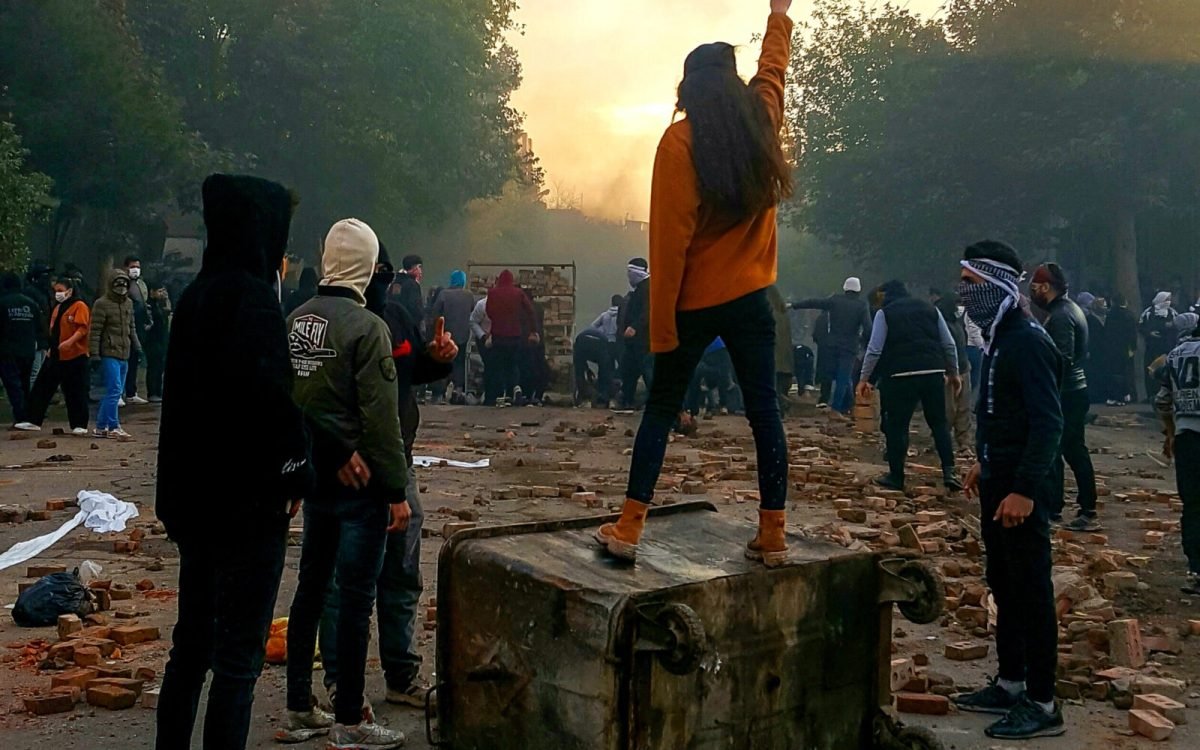In the wake of Mahsa (Jina) Amini’s death in September 2022, Iran entered a transformative era. Women across the country, galvanized by grief, anger, and decades of oppression, ignited a nationwide movement for dignity, autonomy, and radical change. What followed was not just a protest—it was an awakening. One that continues to ripple through homes, classrooms, streets, and even religious institutions.
The Woman, Life, Freedom movement has reshaped Iran’s sociopolitical discourse. At its heart lies a call to reclaim agency—over bodies, beliefs, and futures—from a regime that has long sought to control all three.
Sedigheh Vasmaghi: A Scholar’s Defiance
Among the voices of resistance, Sedigheh Vasmaghi stands out. A deeply devout scholar and former reformist politician, Vasmaghi spent years strictly observing the hijab—even during academic lectures abroad. Her choice to unveil in public was not about rejecting religious identity but about rejecting state coercion.
In 2023, she penned an open letter to Iran’s Supreme Leader questioning the theological legitimacy of compulsory veiling. “How can the Islamic Republic justify such strict enforcement of mandatory veiling when even the Quran does not explicitly require women to cover their hair?” she wrote.
That act of theological defiance, followed by her public unveiling, carried significant symbolic weight. It wasn’t an act of rebellion against Islam—it was a challenge to the regime’s appropriation of religion to justify authoritarian control. Her imprisonment in early 2024 only amplified her message. After international outcry and her deteriorating health, she was released, but her fight continued.
In April 2025, she published Why I Rebelled Against the Hijab, an open-access book combining Islamic jurisprudence with lived experience. “I wrote this book so that future generations will cherish the achievements born of our suffering,” Vasmaghi said, reinforcing her commitment to intellectual integrity and social justice.
The Unfolding Crisis and the Rise of Youth Resistance
By the time Mahsa Amini was murdered for allegedly violating hijab law, Iran was already on the brink. A collapsing economy, widespread corruption, youth unemployment, and a deeply fractured political system had eroded public trust. Women—particularly young, educated, yet jobless—felt the weight of intersecting forms of discrimination.
From 2020 to 2022, youth unemployment soared, with over 42 percent of women aged 15–24 out of work. Economic mismanagement was starkly evident—from the collapse of Tehran’s Plasco Building in 2017, which killed 21 and displaced thousands, to daily inflation and market volatility. These structural failures laid the groundwork for nationwide discontent.
In this climate, Mahsa Amini’s death became the catalyst for collective outrage. Her Kurdish identity added another layer to the tragedy, spotlighting how Iran’s political, ethnic, and religious oppressions converge. Mass protests erupted across 160 cities, with millions—especially Gen Z—taking to the streets. As urban sociologist Azam Khatam notes, localized protests emerged in neighborhoods to evade security surveillance, revealing the tactical intelligence of a new generation of activists.
“A Big No”: Everyday Defiance from Qom to Tehran
Resistance now extends beyond organized activism. It lives in the daily choices of women like Neda, a 23-year-old from Qom, Iran’s religious capital. A former believer in strict hijab, she experienced what she calls an “internal revolution” during the protests. Her anger at years of dress policing transformed into direct defiance.
“I changed the form of my hijab, symbolizing a big No,” she said. Sedigheh Vasmaghi’s public stance helped catalyze conversations even in conservative seminaries. “When the regime doubled down by adopting the Hijab and Chastity Law, many of my seminary friends also shared that there is no explicit text in Islam about compulsory hijab,” Neda explained.
Neda’s story reflects a larger truth: millions of women across Iran, especially youth, are challenging hijab laws through spontaneous, everyday acts of resistance. These are not career activists but ordinary citizens, documenting their dissent in real-time via social media and independent news platforms.
The Hijab and Chastity Law: State Power vs. Public Rejection
In November 2024, the Iranian parliament passed the Hijab and Chastity Law, drastically intensifying penalties for non-compliance. Women now face up to 10 years in prison for repeated “bad hijab” violations. Surveillance technology, including artificial intelligence, is authorized to detect infractions even inside private vehicles.
The law triggered widespread backlash. Both domestic and international voices condemned the measures as draconian. Feminist leaders like Vasmaghi spoke out, and international organizations, including the United Nations, demanded its repeal.
In response, President Masoud Pezeshkian, newly elected in 2024, halted its enforcement. He campaigned on moderation and openly criticized mandatory veiling and hijab patrols. His stance helped secure victory over hardliners, but his win came with record-low voter turnout, especially among women. For many feminists, electoral politics no longer represented hope or reform.
Feminist Media and the Reclamation of Voice
The feminist publication Zanan-e Emrooz (Today’s Women) remains one of the few media platforms daring to document these shifts. Led by Shahla Sherkat, the magazine published a powerful open-access issue for International Women’s Day 2025, analyzing post-Jina societal changes through a gendered lens.
These reports, interviews, and editorials offer critical space for dialogue. They reveal how defiance is reshaping religious discourse, social behavior, and even internal family dynamics. Feminist journalism, long suppressed, is now leading the way in recording Iran’s unfolding revolution.
What Comes Next?
Post-Jina Iran is not defined by hope alone—it is marked by a conscious rejection of fear. This moment reflects a collective refusal to accept domination by singular authority—be it political, patriarchal, or religious.
Women like Vasmaghi and Neda are not anomalies; they are emblematic of a larger societal shift. The Woman, Life, Freedom movement may not have toppled the regime, but it has irrevocably transformed public consciousness.
For the millions defying hijab laws daily, resistance is not just an act of courage—it is an act of self-definition. Their choices reflect a deep, ongoing revolution—one of bodies, beliefs, and futures—that no surveillance camera or prison sentence can undo.
Iran’s future will not be dictated by laws written in parliament or enforced by AI—it is being rewritten, daily, by the women who dare to say no.






